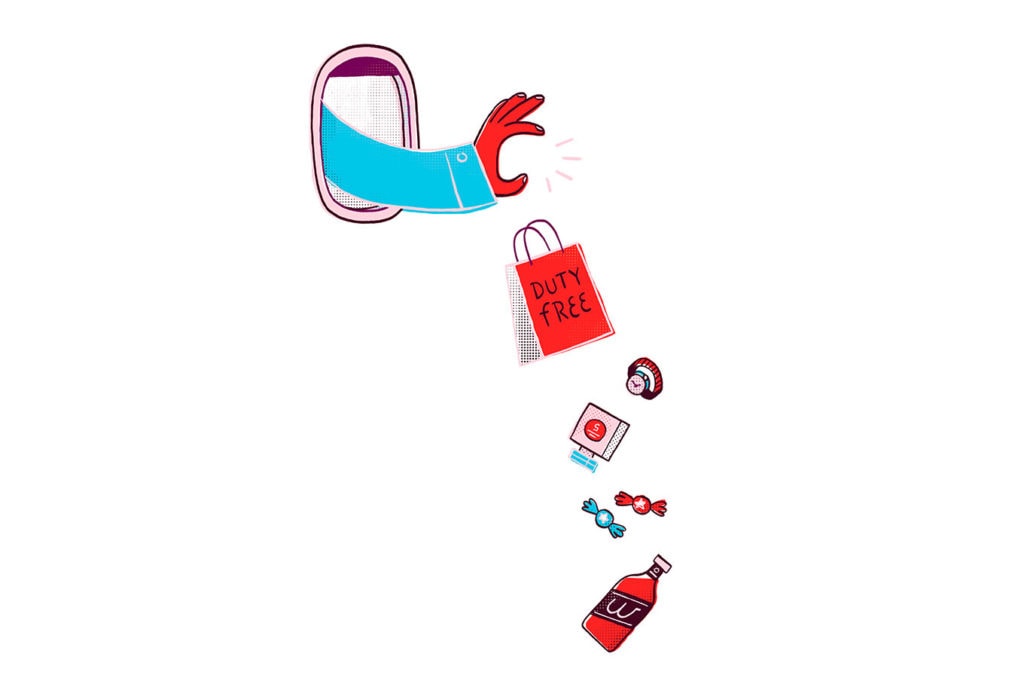Dumping Duty-Free: Are Airlines Saying Goodbye to the Retail Trolley?
Share

APEX Insight: The last of the US Big Three carriers has dropped onboard duty-free. But it’s hardly the end of in-flight retail.
United Airlines canceled its onboard duty-free sales in March, following similar decisions by American Airlines and Delta Air Lines in 2015 and 2014, respectively. “We made this decision based on declining sales revenue for both United and Duty Free World,” a spokesperson for United Airlines explains. While American and Delta attributed their decisions to disagreements with vendors, the recent downturn in airline duty-free sales likely contributed to the airlines’ decision to not procure another vendor.
According to figures published in a March 2016 report by Duty Free World Council, onboard airline sales declined from 7.3 percent of total global duty-free and travel retail sales in 2006 to 4.6 percent in 2014. Another study, by m1nd-set Generation, predicts that airline duty-free sales will fall by 1.5 percent each year until 2025.
Onboard airline sales declined from 7.3 percent of total global duty-free and travel retail sales in 2006 to 4.6 percent in 2014. €” Duty Free World Council
Jettisoning onboard duty-free retail items translates into an approximate 200 pounds in weight savings but also a drop in cabin crew income. United’s flight attendant agreement for 2016-2021, released before its duty-free program was dropped, states that flight attendants are to receive a minimum commission of 10 percent of sales revenue collected – what that actually amounted to when sales were low is uncertain. In the year before ceasing duty-free operations, Delta’s flight attendants earned an average of $10 per month from the sales of duty-free goods. One unnamed Delta purser told Frequent Business Traveler that he was “happy” about the move as the compensation was small and the service was more of a disruption than a benefit to passengers.
However, what airlines have lost, airports have gained – manyfold. In the same decade-long period in which airline duty-free sales are anticipated to decline, airport sales are expected to rise by 7.1 percent annually, according to m1nd-set. A United spokesperson confirms the airline was “unable to compete with airport duty-free vendors that stock much more merchandise.” And airports are investing billions in the on-the-ground retail experience. Examples include Dallas/Fort Worth International’s addition of six duty-free retail areas spanning a total of 20,000 square feet and Los Angeles International’s new terminal housing Gucci, Burberry and Hermès, among other luxury brands.
“We are unable to compete with airport duty-free vendors that stock much more merchandise.” €” United Airlines
Despite forfeits from the US Big Three, onboard duty-free remains attractive in international markets with high retail taxes, like Scandinavia, and rising purchasing powers, like Asia. In these regions, airlines are moving away from the routine airplane trolley to boost ancillary sales. Finnair’s Nordic Sky portal gives passengers access to preorder duty-free shopping on their personal devices, with purchased items being delivered to their seats on the return flight. And Korean Air famously sacrificed 13 seats in the main cabin of its Airbus A380s to make way for a duty-free shop – the carrier hit $168 million in onboard retail last year.
“Dumping Duty-Free” was originally published in the 7.4 September/October issue of APEX Experience magazine.


